Celestial mural on the ceiling of the Main Concourse at Grand Central Station. Photo by Debbie Stone
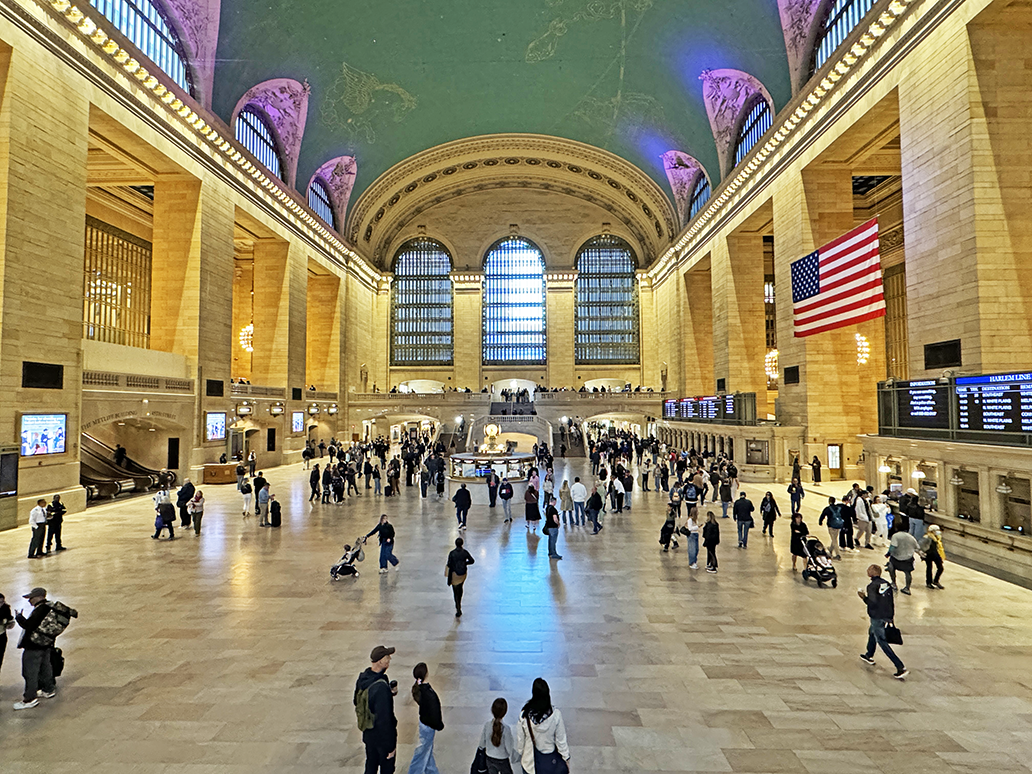 Main Concourse at Grand Central Station. Photo by Debbie Stone
Main Concourse at Grand Central Station. Photo by Debbie Stone
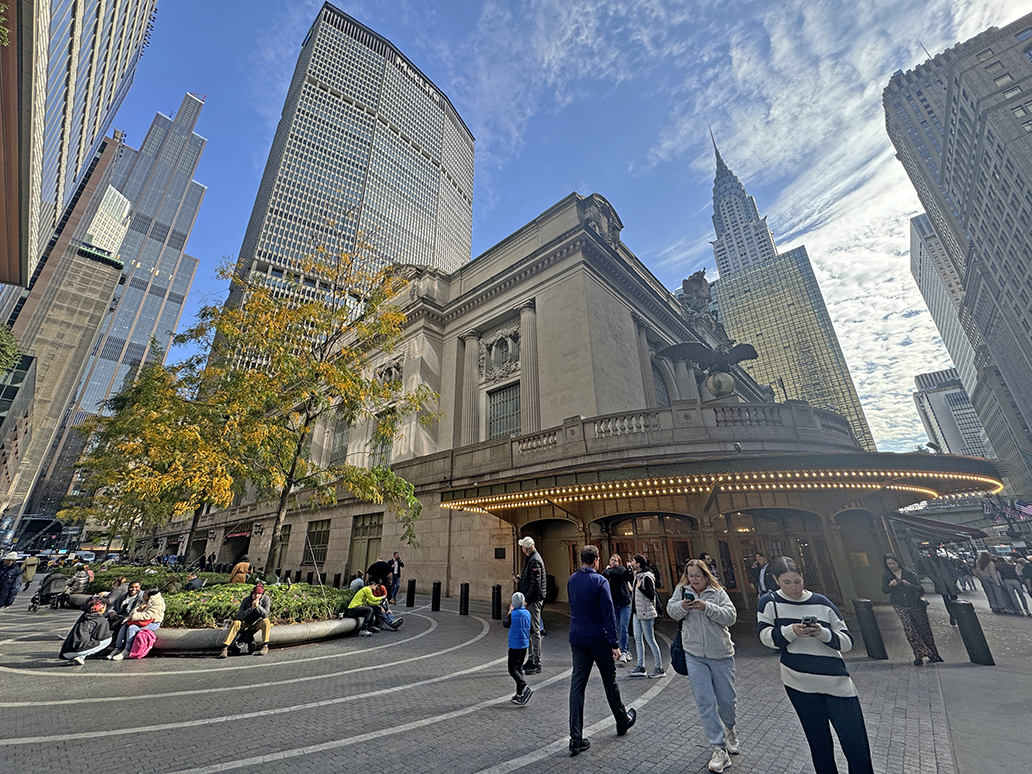 Grand Central Station marquee lights – a nod to Broadway. Photo by Debbie Stone
Grand Central Station marquee lights – a nod to Broadway. Photo by Debbie Stone
By DEBBIE STONE
Santa Fe
For the Los Alamos Daily Post
More than 750,000 people transit Grand Central Terminal – colloquially called Grand Central Station – on a daily basis. It’s a busy place and typically no one stops to consider the history of this world famous train terminal. Or appreciate this New York City gem and its rich past.
On Walks Tours’ Official Tour of Grand Central Terminal, you’ll explore this 49-acre behemoth and get an exclusive look into its history, significance and beauty. You’ll also hear how this iconic masterpiece has helped shape NYC for over a century.
“The story of Grand Central Station is the story of New York City,” says our knowledgeable and personable tour guide, LizaBanks (yes, that’s her first name!). It all begins with Cornelius Vanderbilt, who was a major investor in railroads. In 1871, the magnate buys the land at 42nd Street and Park Avenue in Midtown Manhattan and opens the Grand Central Depot.
It didn’t take too long before the Depot reached capacity and was subsequently reconstructed and renamed Grand Central Station. Steam engines plied the tracks until 1902 when a huge crash eventually banned them on the island of Manhattan.
It was clear that changes needed to be made. Consequently, the entire building was torn down for the construction of the current Grand Central Station. The architectural firms of Reed and Stem and Warren and Wetmore were chosen to design the new terminal. It opened in 1913 to much acclaim, with electric trains replacing steam engines.
Today, it’s the largest train station in the world by area occupied and number of platforms – 44 with 67 tracks along them. The tracks are on two levels, below and above ground.
Though its history is noteworthy, what really sets this Beaux-Arts style building apart is its architectural wonders. These elements shine without sacrificing practicality or efficiency.
When you step into the Main Concourse, which is where the tour meets, you’re greeted with an awe-inducing sight. The ginormous barrel vault ceiling makes it feel as though the building soars into the skies, especially with the celestial mural painted across it.
The mural depicts a Mediterranean winter sky with 2,500 stars and constellations and was designed by French artist Paul César Helleu. When the ceiling was revealed to the New York public, people commented that the design was painted backwards. East was West and West was East. Vanderbilt, who didn’t want to pay to repaint it, said it was painted from God’s perspective. The truth is that it was painted to be seen from a point of view outside our solar system, according to an explanation plaque.
LizaBanks pointed out a tiny black spot in a corner of the ceiling and informed us that it was deliberately left untouched as a visible reminder. Prior to its restoration in the 1990s, the ceiling was black due to the dirt and grime, mainly from cigarette smoke, that had accumulated over the years.
Arches and archways are prominently used within the station, from the majestic windows to the passageways, which are lined with them. Some are adorned with classical murals and masterful tiling. It’s been said that if you get caught up in the station’s grandeur, you can lose track of time and miss your train.
The Main Concourse is where you’ll find the famous opal clock, valued at more than $20 million. When you need to meet someone at Grand Central this is the place. The acorn atop the clock is a symbol of the Vanderbilts, and you’ll find other such motifs within the building.
The information booth below the clock has a secret spiral staircase inside, where the attendants can access to exit the area without letting the public see them. This escape route was created so they can avoid being hounded when they leave the booth. Consider the fact that they are asked upwards of 1,000 questions a day.
In the Onassis Foyer, LizaBanks told us about the Committee to Save Grand Central Terminal and the role that Jackie Kennedy Onassis played in this movement. Though the station was designated a NYC Landmark in 1967, plans were put forth to add a huge tower on top of it. This meant that though the Main Concourse would have been spared, the southern third of the terminal would have been destroyed to make way for other purposes. This plan drew huge opposition from the public and architects.
Jackie Kennedy Onassis was one of the prominent critics. She worked tirelessly to save Grand Central Station from any demolishment. The legal case went as far up as the U.S. Supreme Court, who, in 1978, ruled in favor of saving the terminal. A commemorative plaque in the foyer acknowledges Jackie’s efforts.
The foyer is adjacent to Vanderbilt Hall, which used to be the main waiting room for the station and is now a temporary exhibit and event space. One wooden bench remains, signifying its past purpose.
LizaJane led us outside to gaze at the building’s exterior elements, including the Tiffany Clock and statues surrounding it. The clock face is the largest Tiffany glass (14 feet) in the world, as well as the most expensive. As for the statues, they depict the Greek gods Mercury, Hercules and Minerva, representing speed, strength and intellect.
She also pointed out the cast iron eagle that’s perched on one corner of the building. It’s one of twelve that formerly graced the roof of the original station back in 1898. At the time, the eagle was recognized as a symbol of patriotism and represented the country’s growth.
When Grand Central Terminal was rebuilt, the eagles were distributed and/or sold to different private estates and institutions. Over the years, many of the birds were lost. Then, in 1995, a couple from Bronx found one in the backyard of their newly bought house. They donated the sculpture back to Grand Central Station, where it proudly perches above one of the entrances. The Metropolitan Transportation Authority, which owns the terminal, rescued another eagle from a NY monastery in 2001. It was subsequently installed above another entrance.
LizaJane also pointed out the replicas of subway tokens and Broadway lights on the marquee of the station. More nods to the Big Apple!
Back inside the terminal, via a nondescript entrance, is the Campbell Apartment, now The Campbell, a speakeasy-style bar and lounge. The bar pays homage to the legacy of John Campbell, a wealthy financier who, in 1923, converted the space (to the tune of hundreds of thousands of dollars) to his private office and reception area. The 13th century. Florentine-inspired design features a soaring, 25-foot hand painted ceiling, large stone fireplace, Campbell’s personal steel safe, leaded glass window and more retro details.
Though never his residence, Campbell used the place as a musical recital hall to entertain dozens of guests in the evenings. His parties were legendary and an invite meant you had assuredly “arrived” in society.
After Campbell’s death, the place was used for a variety of purposes, including a jail. It was restored in the 1990s and today, it’s a swanky and classy spot with a Jazz Age ambiance. Not many people who pass through Grand Central know it’s there, which gives it that exclusive club vibe for those who do.
On the lower level of the terminal is the Grand Central Station Oyster Bar & Restaurant. Opened in 1913, it’s the oldest restaurant in the station and known for having one of the largest and freshest seafood menus in the city. Obviously, oysters are celebrated here with two billion of these crustaceans shucked a year!
Design wise, the Oyster Bar’s arched ceiling is a marvel. Even more importantly, the arches were laid with fireproof tiles that would save the restaurant from total collapse in 1997. As a fire raged through the restaurant, the tiles protected the arched structure and consequently the rest of the terminal.
Nearby, in another elegant arched-area is the Whispering Gallery, where a pair of individuals can stand on opposite ends of the gallery and hear what the other person is saying. This place became popular with tourists, once they realized its “magic”.
The effect is not a secret, though, as it’s one that’s commonly created by these elliptical style of arches. They are known to carry the sound of the room from one end to another. With no carpeting or vents to absorb the sound waves, they can travel easily. We had to test it, of course!
The tour also includes a visit to the newest section of the terminal, Grand Central Madison. This building, which opened in 2023, serves as the Long Island RR’s eastside terminus. At $11.5 billion, it’s an impressive engineering feat, which involved taking a former train storage yard and transforming it into a 350,000 square-foot, state-of-the-art terminal.
The new station lies deep beneath Grand Central Station – 17 stories to be exact. And it boasts 14 additional tracks, along with the second longest escalator in the country. Also notable are the spacious corridors and engaging art, including glass mosaics, digital artwork and poetry, and a rotating photography lightbox exhibition.
If you’re hungry after your tour, make a beeline for Grand Central Market. Home to sixty seafood varieties and 400 types of cheese, not to mention all the other mouth-watering offerings, you’re guaranteed to find something tasty to eat.
Visit www.takewalks.com.
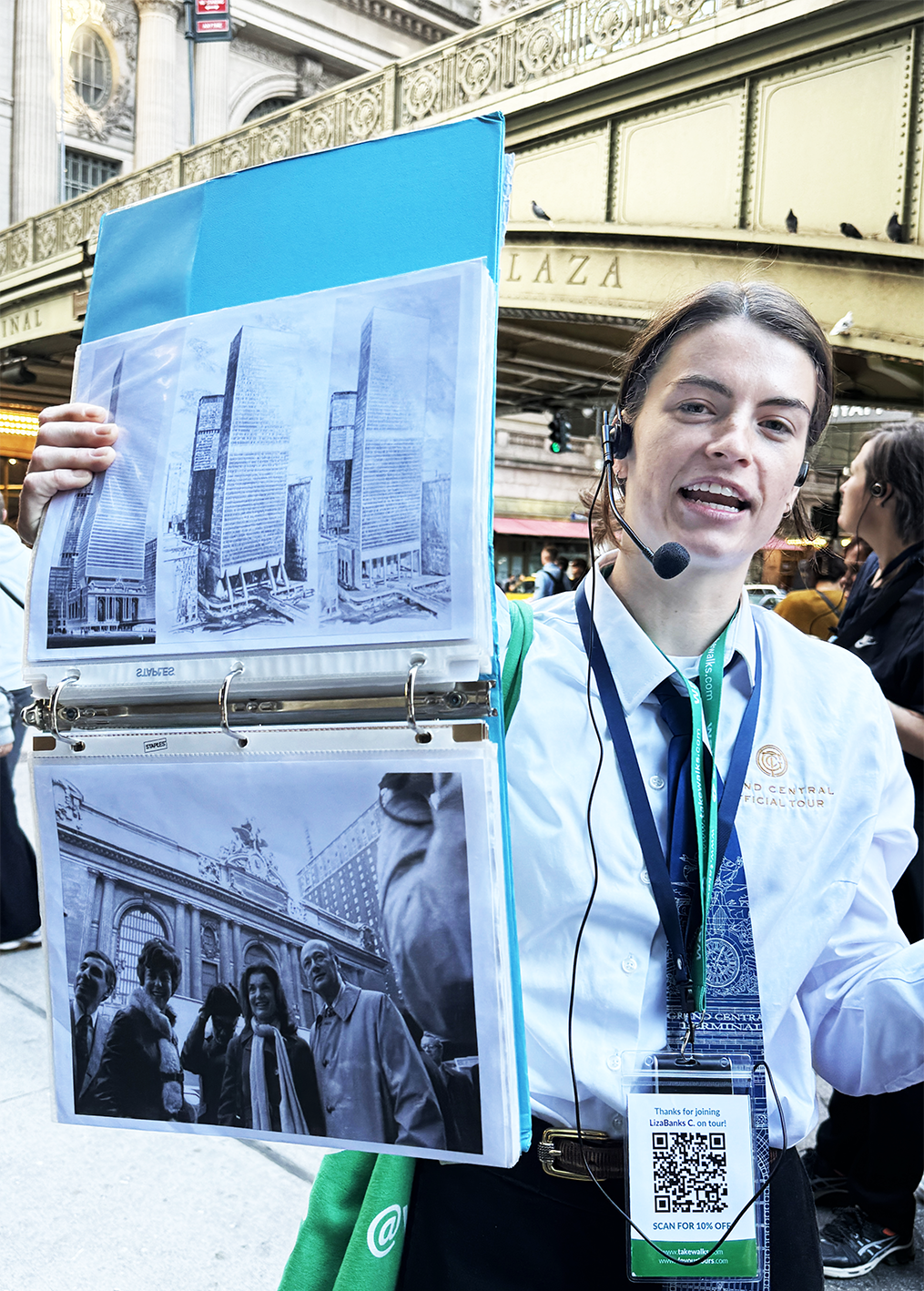 Guide LizaBanks shows photo of the tower project, which thankfully did not come to fruition. Photo by Debbie Stone
Guide LizaBanks shows photo of the tower project, which thankfully did not come to fruition. Photo by Debbie Stone
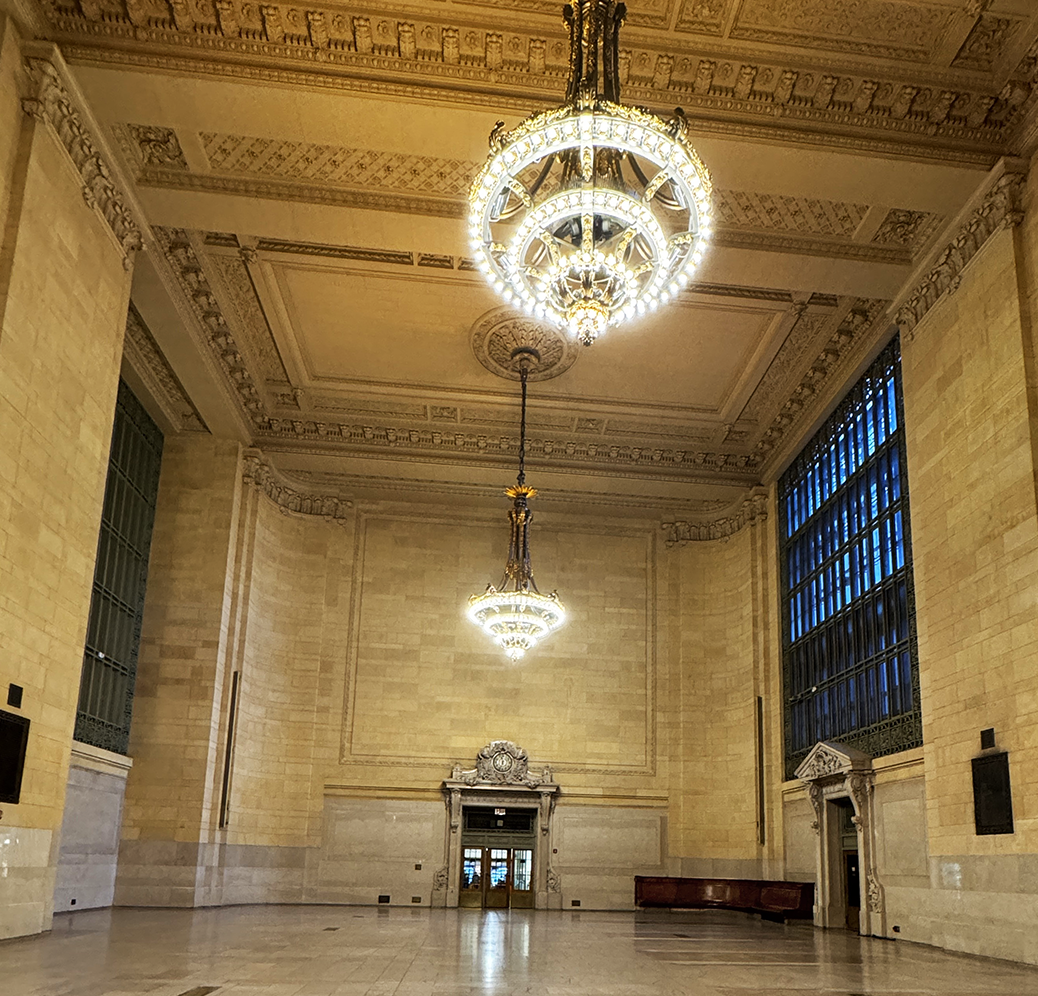 Vanderbilt Hall with its one remaining original wooden bench. Photo by Debbie Stone
Vanderbilt Hall with its one remaining original wooden bench. Photo by Debbie Stone
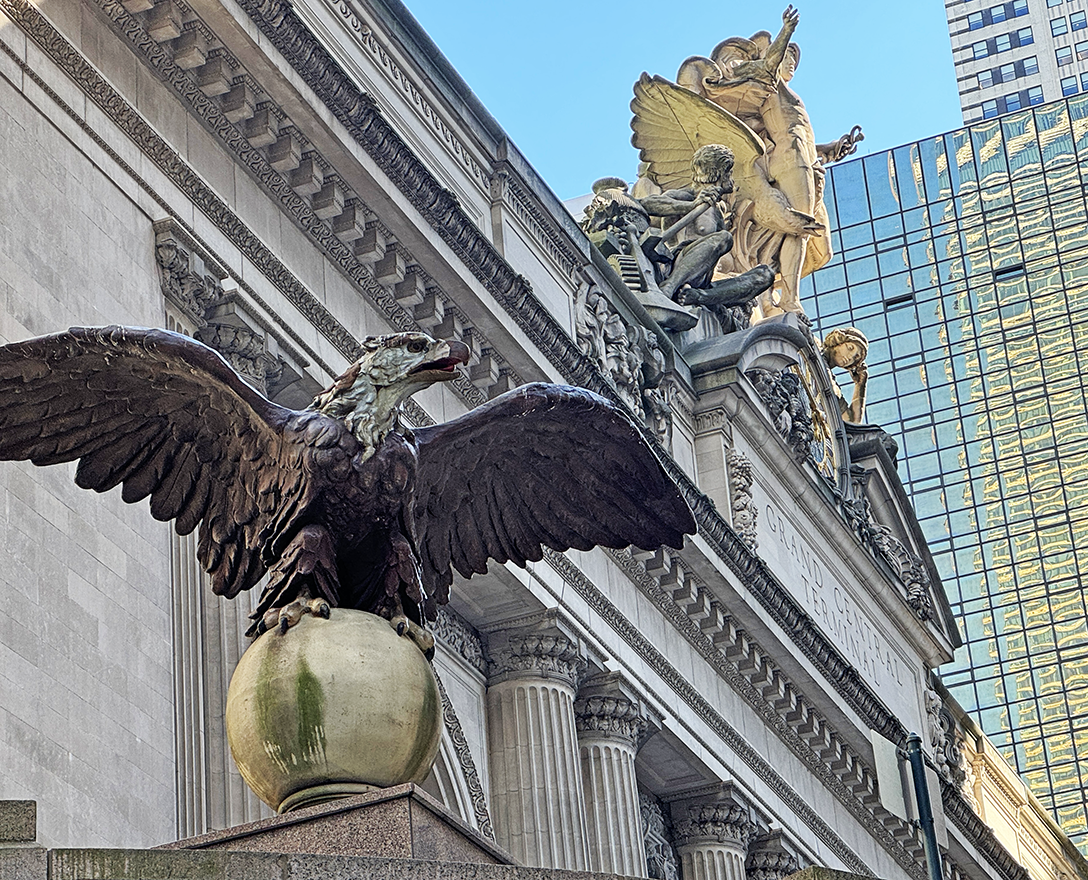 Sculptures of eagle and Greek gods. Photo by Debbie Stone
Sculptures of eagle and Greek gods. Photo by Debbie Stone
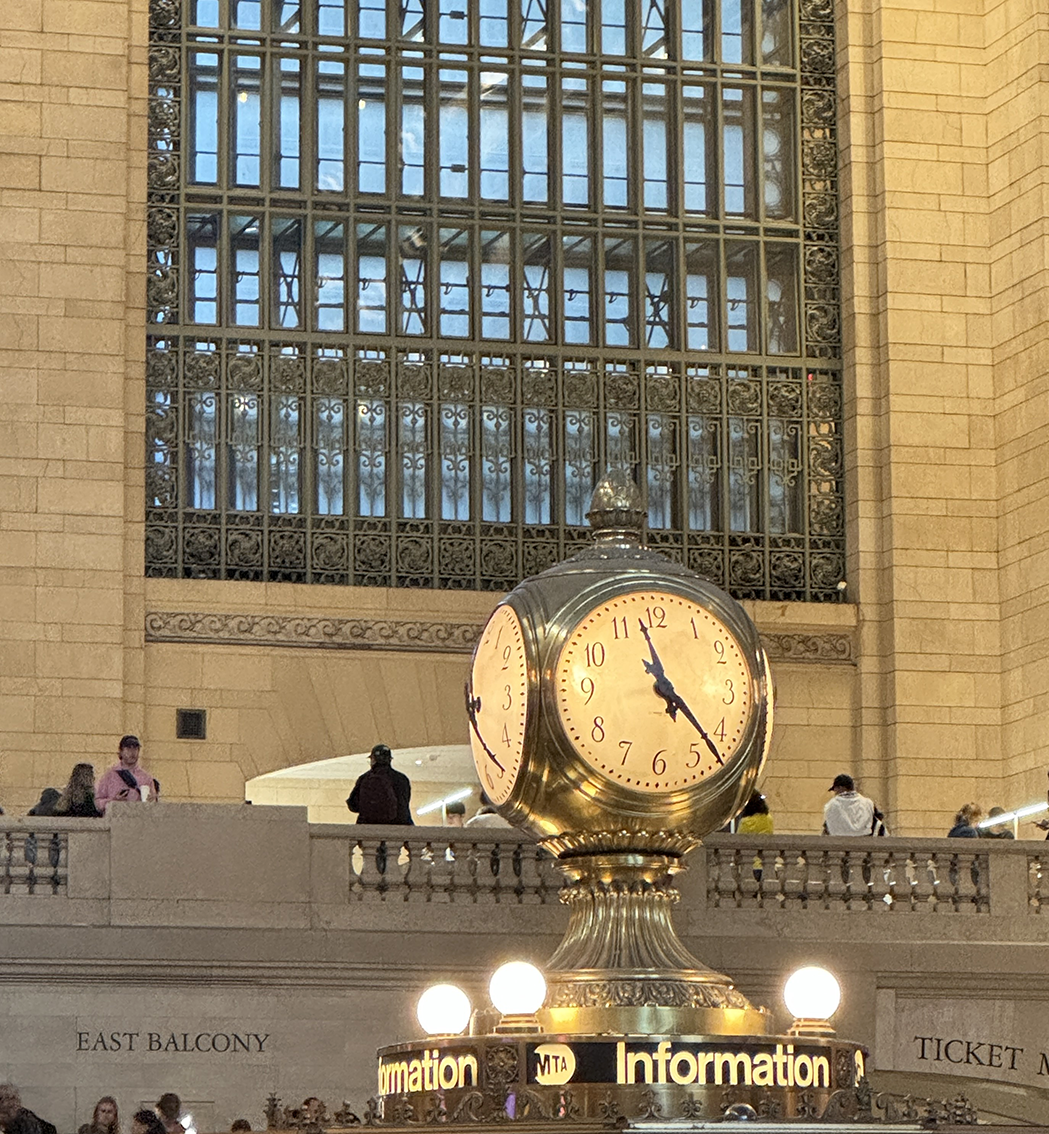 Opal clock above information booth. Photo by Debbie Stone
Opal clock above information booth. Photo by Debbie Stone
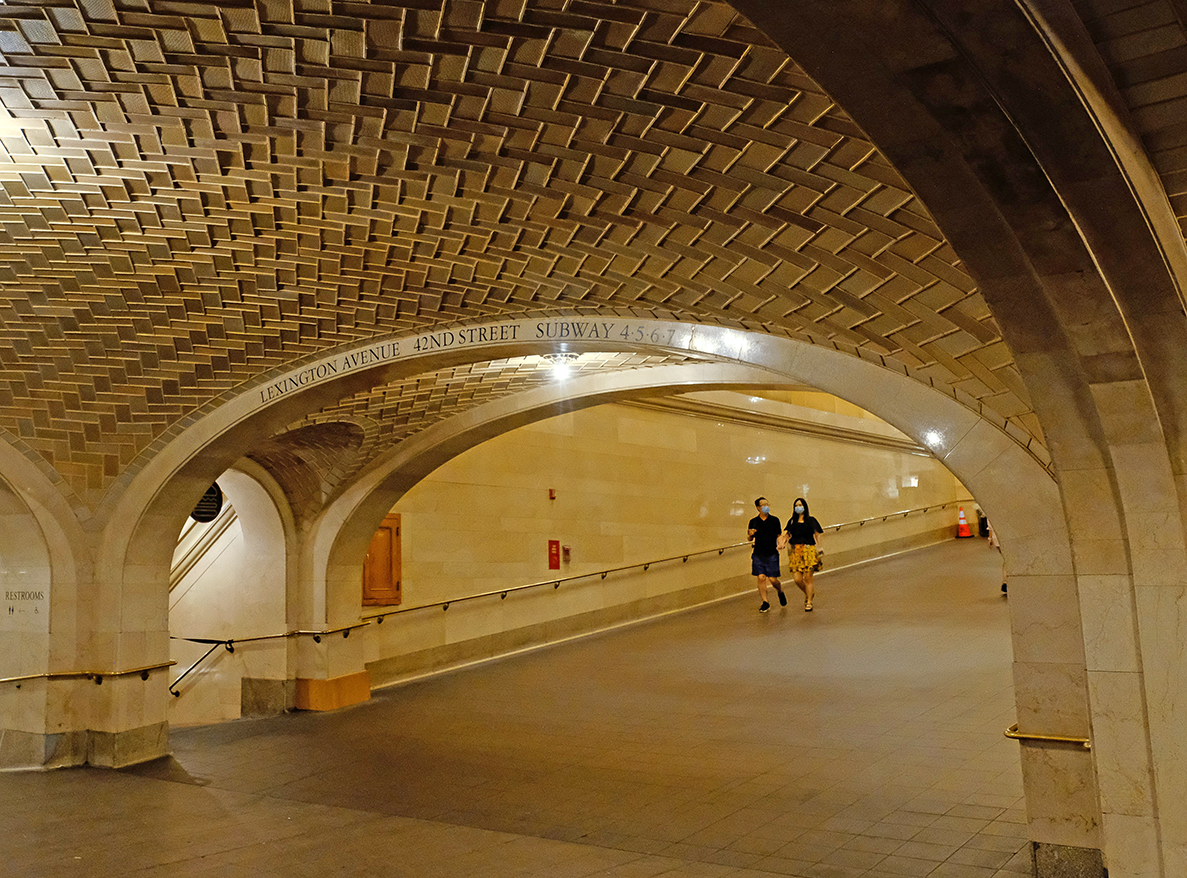 Arches figure prominently in Grand Central Station. Courtesy/Walks Tours
Arches figure prominently in Grand Central Station. Courtesy/Walks Tours
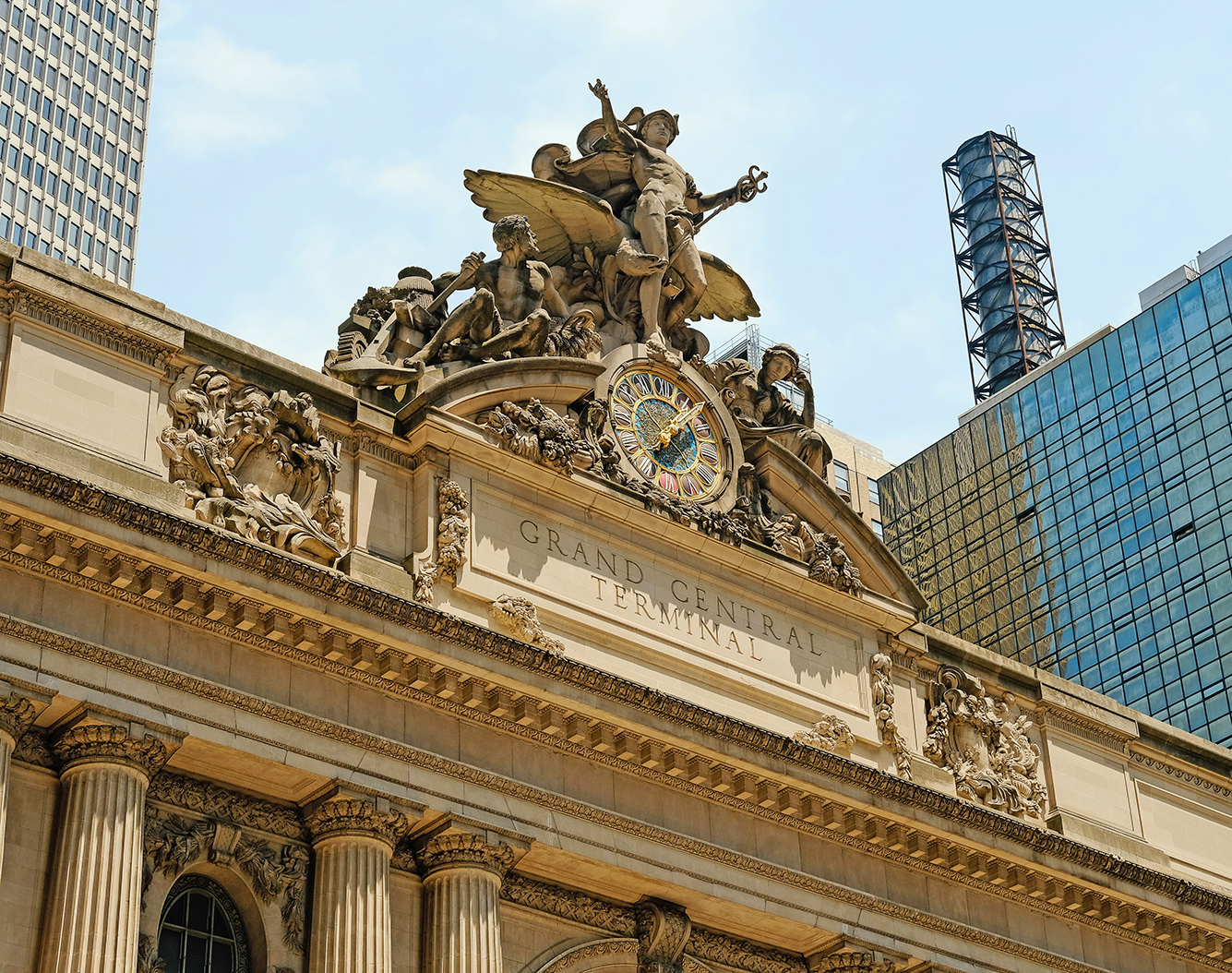 Famed Tiffany clock and statues of Greek gods. Courtesy/Walks Tours
Famed Tiffany clock and statues of Greek gods. Courtesy/Walks Tours
This post was originally published on here







